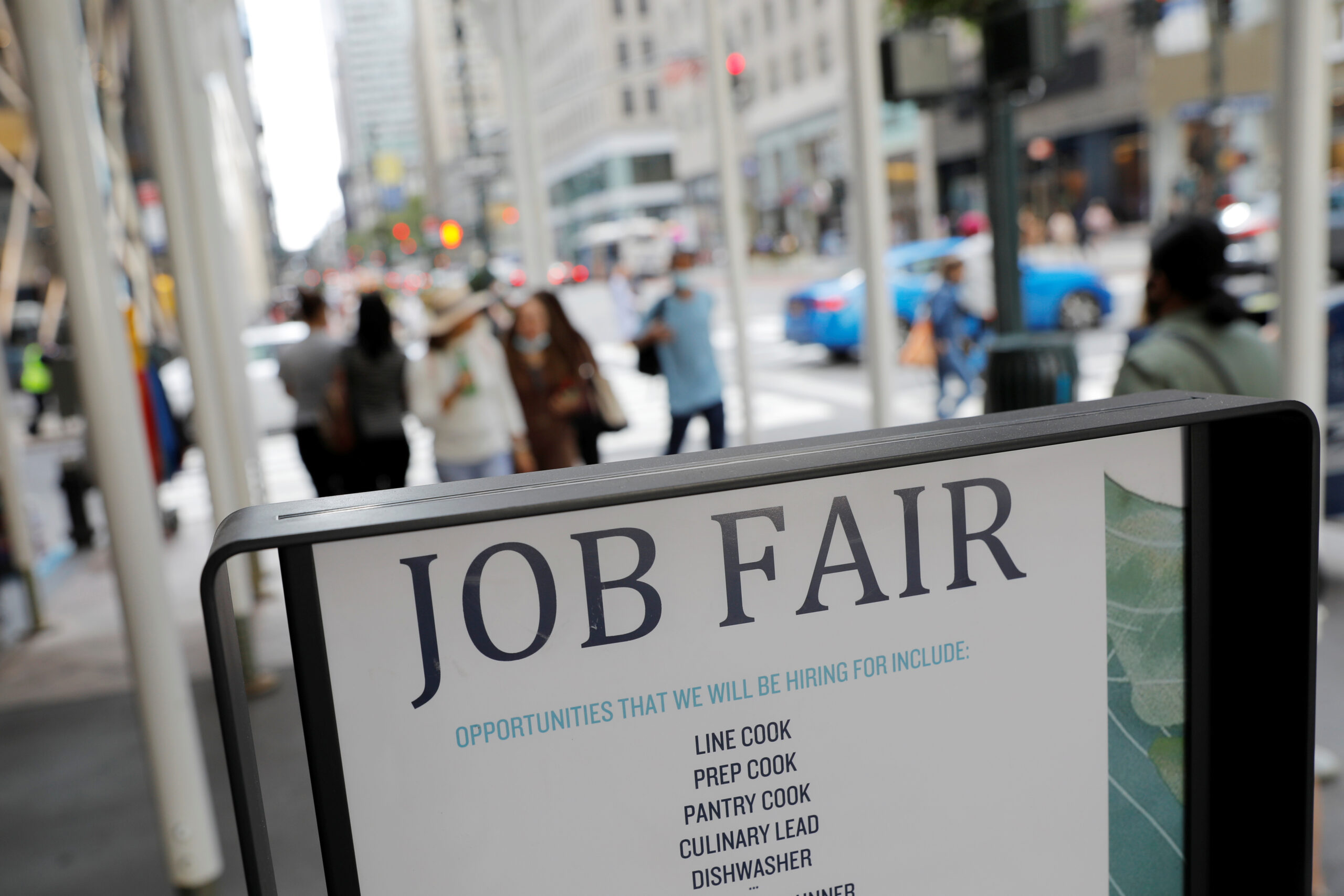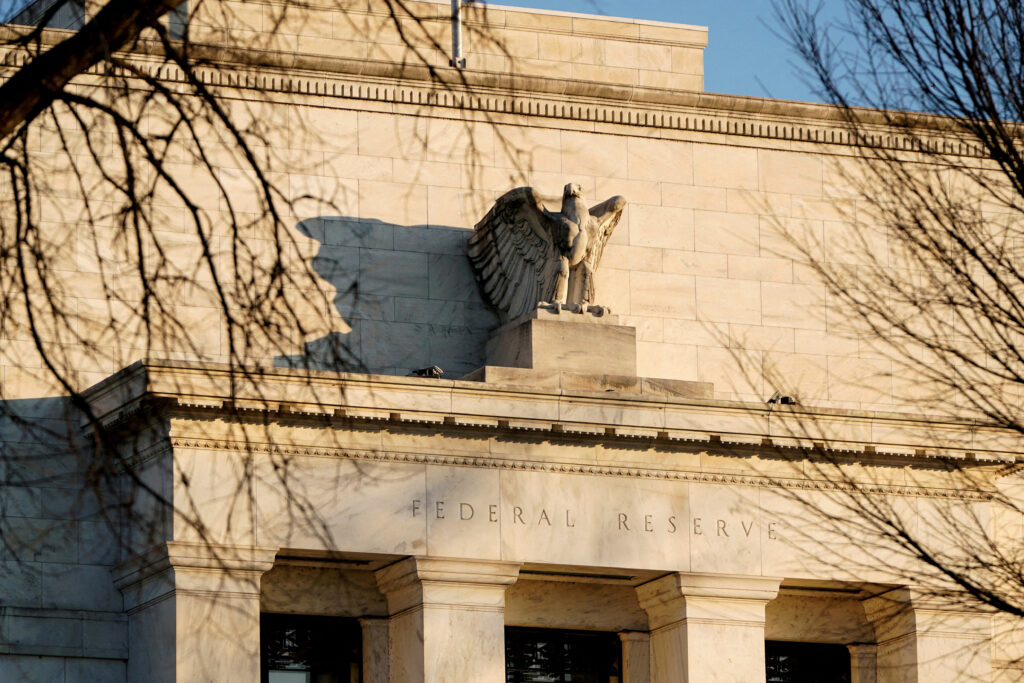WASHINGTON – The number of Americans filing new applications for unemployment benefits dropped to a four-month low last week, suggesting that the labor market remained fairly healthy.
The upbeat outlook on the economy was underscored by other data on Thursday showing corporate profits increased at a more robust pace than initially thought in the second quarter.
Strong profit growth should help to underpin the labor market and investment. The economy’s resilience could make it harder for the Federal Reserve to deliver another 50 basis points interest rate cut in November as some investors hope.
“The economy remains strong and the need for additional large rate cuts is questionable if the economy continues to move forward at a brisk pace,” said Christopher Rupkey, chief economist at FWDBONDS.
Initial claims for state unemployment benefits dropped 4,000 last week to a seasonally adjusted 218,000 for the week ended September 21, the lowest level since mid-May, the Labor Department said. Economists polled by Reuters had forecast 225,000 claims. Unadjusted claims decreased from 5,957 to 180,878 last week.
Though the labor market has lost momentum amid declining job openings and a step-down in hiring, layoffs have remained low.
But a strike by about 30,000 machinists at Boeing (NYSE: BA), which has forced the aerospace company to announce temporary furloughs of tens of thousands of employees, including what it said was “a large number of U.S.-based executives, managers and employees” could boost claims.
Striking workers are not eligible for unemployment benefits, but the work stoppage could cause employment disruptions at Boeing’s suppliers in addition to the temporary furloughs.
The number of people receiving benefits after an initial week of aid, a proxy for hiring, increased 13,000 to a seasonally adjusted 1.834 million during the week ending September 14, the claims report showed.
The so-called continuing claims have dropped from more than 2-1/2-year highs touched in July, attributed to policy changes in Minnesota that allowed non-teaching staff to file for unemployment aid during the summer school holidays.
The continuing claims data covered the week during which the government surveyed households for September’s unemployment rate. Continuing claims fell between the August and September survey week. The jobless rate slipped to 4.2% in August after rising to 4.3% in July. The increase in the unemployment rate from 3.4% in April 2023 as a surge in immigration boosted labor supply has raised fears of rapid labor market deterioration.
Last week, the U.S. central bank cut interest rates by 50 basis points to the 4.75%-5.00% range, the first reduction in borrowing costs since 2020. Fed Chair Jerome Powell said this was meant to demonstrate policymakers’ commitment to sustaining a low unemployment rate.
Financial markets saw a roughly 54% chance of another half-percentage-point rate cut at the Fed’s November 6-7 policy meeting, according to CME’s FedWatch tool. The odds of a 25 basis points rate reduction were around 46%.
Stocks on Wall Street traded higher. The dollar was steady against a basket of currencies. U.S. Treasury yields rose.
STRONG ECONOMIC GROWTH
A separate report from the Commerce Department’s Bureau of Economic Analysis showed corporate profits including inventory valuation and capital consumption adjustments increased at a $132.5 billion annualized rate in the second quarter. They were revised up from the $57.6 billion pace estimated last month.
The revision reflected a sharp upgrade to domestic profits of nonfinancial corporations, now estimated to have increased $108.8 billion, instead of $29.2 billion. That could support business spending on equipment.
Income at the disposal of households was also solid.
As a result, gross domestic income growth, which measures economic activity from the income side, was revised up to a 3.4% rate last quarter from the initially estimated 1.3% pace. GDI rose at an upwardly revised 3.0% pace in the January-March quarter from the previously reported 1.3% rate.
Gross domestic product growth, the traditional measure of economic growth, was unrevised at a 3.0% rate last quarter, in line with economists’ expectations. In principle, GDP and GDI should be equal, but in practice, they differ as they are estimated using different and largely independent source data.
The government revised the national accounts data from the first quarter of 2019 through the first quarter of 2024. The revisions showed economic growth and corporate profits were stronger in 2023 than previously estimated.
The revision narrowed the gap between GDP and GDI, which some economists have argued suggested that GDP was overstating the economy’s health.
The so-called statistical discrepancy contracted to 0.3% of GDP in the second quarter, revised down from 2.7% previously.
Even more encouraging, the saving rate was raised to 5.2% last quarter from the previously estimated 3.3%.
There had been concerns among some economists that consumers were running down savings to fund spending.
“Households are in much better shape,” said Conrad DeQuadros, senior economic advisor at Brean Capital.
The average of GDP and GDI, also referred to as gross domestic output and considered a better measure of economic activity, increased at a 3.2% rate last quarter, revised up from the previously estimated 2.1%. Gross domestic output advanced at a 2.3% pace in the first quarter, revised up from the previously reported 1.4% pace.
“The revisions only strengthen our conviction that the U.S. economy will continue to expand at a decent pace over the coming year, which suggests labor market conditions are unlikely to deteriorate markedly from here,” said Michael Pearce, deputy chief U.S. economist at Oxford Economics.
“We think that will push Fed officials toward a more gradual series of interest rate cuts in the quarters ahead.”
(Source: ReutersReuters)
Mary Lee is a freelance writer and journalist based in Toronto, Canada. She holds an M.S. degree in business and economic journalism from Columbia University’s Graduate School of Journalism in New York and a certificate in digital marketing from the University of Toronto. Read Full Bio





















